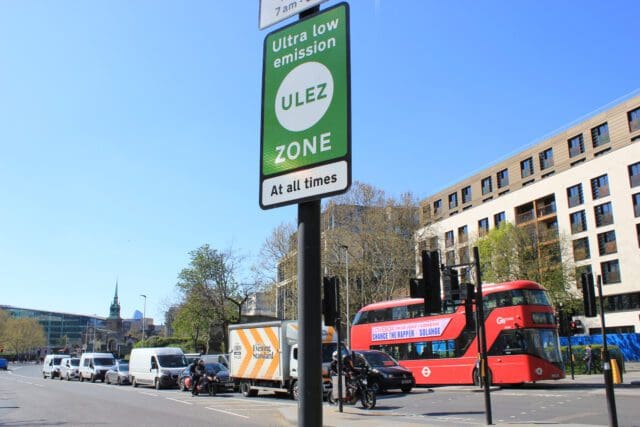Taxi drivers and thousands of other motorists receive fines and charges for entering congestion and emissions zones. As excuses go, being able to prove that your car was in Ukraine at the time has to be one of the best for not paying a ULEZ fine . . . although it took a while for common sense to prevail.
Many of those who receive tickets insist their vehicles do comply with the zone’s emissions standards and the fines are a mistake, while others argue that their vehicle was not involved and it is mistaken identity or fraud involving cloned number plates.
Mayor of London Sadiq Khan introduced the controversial ULEZ scheme in central London five years ago to cut pollution and last year it was expanded to include all London boroughs. Drivers have to pay a £12.50 daily charge for driving non-compliant vehicles. Those with EVs and other compliant vehicles are exempt.
Burden of proof
Once a ULEZ camera has your number plate, a driver needs to be able to prove that it wasn’t their vehicle caught on camera at a particular time or on a particular date – and you would think the vehicle being in the Ukraine as part of the war effort against Russia is up there with the most watertight.
The Daily Mail reports that this was one of a number of incidents in which drivers received fines when their cars were nowhere near the scene of the crime.
Chartered accountant Charles Cooper drove his Volvo SUV to Ukraine to donate it to the army last August. Two months later, he returned from holiday in Greece – with his former vehicle still in Ukraine – and received fines and letters threatening legal action and bailiffs over unpaid ULEZ charges after his car was apparently caught on cameras in London.
Mr Cooper’s lawyers argued that not only was his car 1,400 miles away at the time, the number plate didn’t match either. He has since received an apology and all fines and threats of legal action have been cancelled.
Identity crisis
There have been other cases in which partial number plate matches have led to fines being issued to the wrong drivers, or drivers whose plates had been cloned.
This happened to Arthur Bailey’s son, who lives in Manchester and received a fine for driving a Ford Mondeo in London.
Mr Bailey told The Telegraph: “The vehicle in the photograph, the ‘proof’ of the alleged crime, was clearly a completely different vehicle, possibly a Nissan SUV and certainly not the Mondeo he owned which had never been within 100 miles of London.”
TfL waived the fine after establishing his son’s number plate had been cloned.
And Kent resident Hugh Blanchard discovered his ULEZ account was being billed for a number plate that was similar to his own personalised plate and had only been partially captured by a ULEZ camera while he was nowhere near the area.
A TfL spokesman said: “After a review of Mr Cooper’s case it is clear that the charge was issued in error. We apologise for any distress caused and have cancelled the outstanding charge.
“We have got procedures to deal with these issues and where people have been charged incorrectly they will be refunded,” said the spokesman.
As well as cloned and partial number plates, nearly 1,000 drivers in north west London were wrongly fined by a ULEZ camera which had been installed facing the wrong way and was recording innocent drivers outside the zone.
Millions of drivers are correctly identified by ULEZ cameras every day but it is a concern that fines can be issued with only partial number plates identified and even the wrong make and model of vehicle.
Even if it is a mistake, drivers need to deal with it because it can quickly escalate and cause major problems for them, including legal action.




